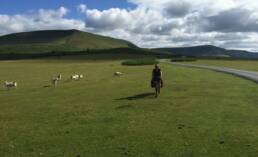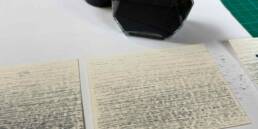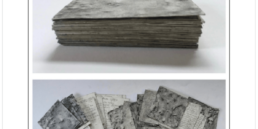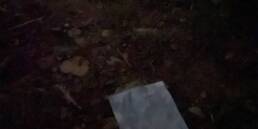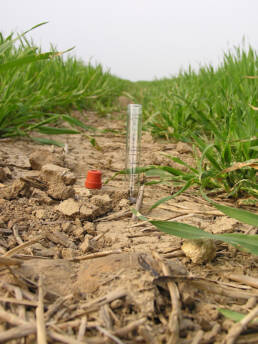
Serendipitous Symposium
Artists in the Field: Ephemeral Landscapes and Experimental Geographies
A personal response to the symposium within the context of my own art practice
(A blog post from my a-n all or nothing blog, January 2016)
‘If in doubt return to the field’ was Dr Harriet Hawkins’ opening to the symposium, Artists in the Field: Ephemeral Landscapes and Experimental Geographies at the Parasol Unit, London, on 16 January 2016. Serendipitous timing, as I am moving back towards working in the landscape and reflecting on my practice, considering how I will re-encounter ‘the field’ as well as the nature of the fieldwork itself and potential outcomes. Both are fluid and liable to change. I have starting points without end points. When I asked the panel about the extent to which their methodologies and outcomes are defined from the start, I was pleased to hear that everyone takes a creative and experimental approach, and it was useful to hear how they find ways around the inevitable need to pin these approaches down in applications for residencies to PhDs. The phrase ‘pilot project’ used in geography is one that I will bear in mind.
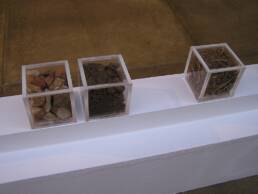
My past works responding to landscape have come out of a personal encounter through walking and involve activities such as observing, photographing, sketching and making both on site and back in the studio. My own interest in investigating the history and present identity of a particular site, my gender, and my love of being in nature and landscape are unavoidably integral to the way in which I work and any ‘outcomes’. I therefore instantly knew that I was in the right place when Dr Hawkins spoke of how geographical encounters and engagements with ‘the field’ are now seen as being far from neutral with the elitism of the past expanding to be more culturally diverse.
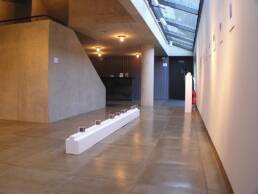
For 11 Tracks (2002), I repeatedly walked around the tracks encircling the base of a hill, responding to their identity and history, discovering that the hill was once the site of an ancient fort. My own walking made me think about all the people who had walked these tracks and why. An unexpected outcome was seeing the work exhibited in a gallery and realising that I had inadvertently created a new ‘track’ for the viewer to walk around and encounter. I contemplated the relationship between continual attacks on, and changes to, our environment and how nature can be encountered within a gallery or museums context. Some years later I revisited this work, this time measuring the walk in my own paces, using the length of my stride, creating a more personal mapping for SP386 389 (2007-8).
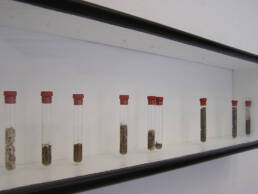
In contemplating a return to the field, this time through journeys of varying length on foot or by bicycle, I looked forward to the presentations by five artists from the Temporal School of Experimental Geography (TSOEG) and found both resonances with my own practice as well as new inspiration.
I found Corinne Silva’s description of how one artwork leads to another to be particularly apt as I have meandered my way over the years from identity and place, people and objects, to the shape, form and function of objects when encased in (string) lines. This then led me into creating a series of works that consider the nature of line and drawing, scribbling and doodling, and I have totally immersed myself in this for some time now creating a series of drawings and ‘drawing sculpture’. Whilst some of these have been exhibited, I have a whole body of work that has not yet been shown and does not have an online presence (on my list of things to do this year!). Initially my scribbled lines were the result of a doodle on a train and had nothing to do with landscape. Gradually I have moved from trying to challenge and resist the way in which drawing any sense of a horizon line across a page inevitably suggests landscape, to finding that my Imagined Lines (as I am currently calling this body of work), are leading me back into landscape, in both a macro and micro way, and wanting to create new work that responds to where I am at now.
Hearing how TSOEG artists respond to landscape showed just how diverse artwork can be and yet still connect, both within and outside the group. How to communicate ideas visually, verbally and in other ways was something that came up in most of the artists’ talks. Corinne Silva’s photographic works visually connected the landscapes of Spain and Morocco, which whilst politically and geographically separated, also have similarities. She also described how the personal event of inheriting, and now being responsible for, the ‘mother geranium’ of her grandmother led to her thinking about wider issues and creating a new work (this had a personal resonance as I have also inherited my nan’s geranium which she grew from a cutting grown by my great grandparents).
For Copper Geographies, Ignaccio Acosta’s processes of working, and his personal movement across the globe, reveal the hidden power relations and exploitation in the landscape, highlighting the toxic trail between isolated landscapes and everyday lives of people in Europe. Luce Choules (the founder of TSOEG) described how she walks, cycles, swims, maps and surveys, creating a personal experience of place and a physical and emotional geography of places. Poetry and performance are important in her practice and she left the audience entranced with a reading, illustrating the power of this medium to visually generate images and encounters with a place in the minds of others. Emma Smith engages with the landscape in a very different way, through a School for Tourists that uses walks, talks, discussions, debates and other methods to engage with people to address issues around the roles of host and guest, rights and responsibilities. The process is the artwork and it is often not appropriate to document or remove the work from its original context through exhibitions.
Andrew Ranville (founder of Rabbit Island residency) reflected on the nature of ‘the field’ and his experiences of being on expeditions, working alongside scientists and researchers. He considered the wider question of what it means to be an artist in the field and how we visually represent this experience or try to create a resulting ‘experience’ for a viewer in a gallery once ‘the field’ is no longer there, whether through photography or sculpture or any other medium. He increasingly feels that the experience of being in the field is, for him, the artwork. ‘Mapping’ is a word that came up several times during the symposium and Ranville described the inherent satisfaction of immersing oneself in a place, drawing on traditional cartographic skills and artistic practice to create a map rather than simply reading a satellite image or map. As the audience and other artists joined the discussion, some of these questions were discussed at greater length highlighting not only the diversity of practice but also the common concerns of artists working in the field.
In the weeks following the symposium I have thought a lot about what was discussed and also remembered why I moved away from working in the field, whether urban or rural. Whilst following the paths of underground rivers from above ground, I found that I was struggling to visually represent my ideas, research, fieldwork and experiences of being in the field in a creatively interesting way. With so many places wanting works that respond to identity and place, I felt that my initial responses of walking, photographing, mapping, researching, sketching and making, were too predictable and not generating creative outcomes that I was happy with.
My current work on Imagined Lines is naturally leading me back into the field so it was great to feel so inspired and energised after the symposium and discover the work of Dr Harriet Hawkins of Royal Holloway, University of London, and meet some of the TSOEG artists and staff at the Parasol Unit. Everyone was very friendly and approachable and generous with their time and in sharing their thoughts and discussing their practice. Some of them are involved with the Royal Geographical Society (RGS) and art so I will look out for future events there too.
All in all, a great day out. I also enjoyed seeing Julian Charrière’s exhibition at the Parasol Unit and particularly liked how, in We Are All Astronauts (2013), he has sanded the surface of globes and suspended them above ‘sandpaper’ created from the dust, thus erasing and blurring political, economic and cultural territories, borders and boundaries to create one ‘land(scape)’.
So where now? I want to complete Imagined Lines, find an exhibition space, finish overhauling my website, and then return to the field. I take inspiration from the way in which Eva Hesse wrote in her diaries and letters how being somewhere and responding to what is there, in her case string in a factory in Germany, inevitably leads to new work and ideas. In my case, years of experience have taught me to trust that when I embark on my forthcoming journeys, the very process of moving from my imagined ‘landscapes’ to re-immersing myself in the field will generate ideas and artworks and lead me somewhere. A couple of days after returning from the symposium, my head buzzing with ideas and inspiration, I received an email asking me if I could work with a group of degree students, focusing on drawing and techniques that I use in my own projects. Yet more serendipitous timing – I have created a project called ‘Encountering the field: a creative and experimental response to a site through drawing’. The timing could not be better!
(January 2016 a-n all or nothing blog post)
